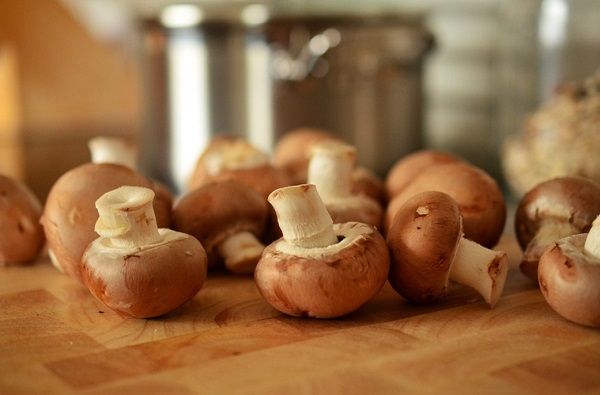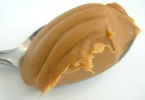Mushrooms are not only a delicious accompaniment to many foods but are increasingly becoming a meat alternative for vegetarians and vegans. We know that our feline friends are not going to go down that route any time soon being the obligate carnivores that they are, but can cats eat mushrooms?
Whether you feel tempted to pass off an unwanted pizza topping or are worried about your cat coming across mushroom parts in the garbage or growing wild around your home, it is good to know a little more with regard to this fungus as a food source.
Can cats eat mushrooms?
To be on the safe side, mushrooms are not recommended for cats. If your cat eats a couple pieces of store bought edible mushrooms then she would most likely be fine. Store bought or home grown mushrooms are generally free of toxins and are of the non-poisonous variety. However, there are many wild mushrooms that can be toxic to cats. Wild mushrooms generally grow outside among weeds, but may also appear in basement corners or other hidden areas within a home. Be careful of any hidden mushrooms on your property or in the areas in which your cat wanders. Mushrooms come in a dizzying array of styles and types so it is hard to give a definitive answer to this simple question and instead we have to look at the different types.
Determining which mushrooms are safe and which are toxic is difficult for most people to do. The lay person does not have the knowledge of what to look for in determining safety; therefore, avoiding all mushrooms is best. Cats do not need mushrooms in their diet; avoiding mushrooms will not do any harm to your cat. In the event your cat eats a bit of mushroom off a plate, s/he will be fine, but a habit should not be made of offering mushrooms to your kitty.
Mushrooms, the good and the bad
It might be surprising but some cats, just like us, are not only partial to a mushroom now and then but positively crave them. So we need to be clear, mushrooms that are good for humans are fine for your cat and are a healthy addition to a meat-based diet. Mushrooms being used in place of meat can be a healthy addition to the diet of your cat while also appeasing his/her craving for eating a fleshy piece of meat. The texture of a mushroom resembles meat, and may help your cat to lose weight if used in lieu of treats or other meat foods. Feeding mushrooms to your cat is not the best idea, but is not going to hurt your cat.
Offering a bit of mushroom is fine, but not all mushrooms are created equally. Be sure to research the type of mushroom you usually enjoy before giving bites to your cat. Also, talk to your vet to ensure the type of mushroom in your home is not deemed poisonous to the pets in your household.
Most mushrooms are basidiomycetes and are gilled, and in general identification to a genus can be accomplished in the field using a local mushroom guide. Identification to a species is more difficult but for most of us our mushrooms will come from the local supermarket so they will be clearly labeled.
A good rule of thumb for humans is not to experiment with any mushrooms we might find while out for a walk. Few would, but this may be a difficult message to convey to your pets. Outdoor cats hunt, wander, and eat without human intervention. Barn cats may be fed and generally cared for by an owner, but when the cats are outside for large portions of the day, minding their diet is difficult for any owner to monitor. The best thing we can do to protect our cats from poisonous mushrooms is to learn how to remove potential dangers and spot the signs of mushroom poisoning.
Dangers and symptoms of mushroom poisoning
Something you can control is what your cat has access to inside your house and around the garden. Mushrooms should be kept in the fridge and out of reach. When mushrooms reach your trash can, consider removing the trash can liner and taking outside. Cleaning plates and the area around a table is also important, as many cats are similar to dogs in nibbling leftovers and cleaning the floor of scraps after dinner.
The garden is where you can pay a little more attention. If you happen to grow your mushrooms, fencing the area may help deter your cat from roaming into the area. Spraying a liquid cat deterrent around the areas mushrooms grow may help deter a curious cat as well. Pulling any weeds and watching for wild mushrooms
As mushrooms can pop up over night, a quick visual inspection in the morning is a good idea and it is best to remove and dispose of any fungus before your cat gets a chance to investigate.
Mushrooms can contain a number of harmful toxins. Amanitin is the most common cause of poisoning in humans and pets. The names of mushrooms containing amanitin should give you an indication other their potential dangers. I doubt anyone would allow their best buddy to eat a ‘Death Cap’ or a ‘Destroying Angel’
Symptoms that will follow ingestion of this type of mushroom include drooling, vomiting, excessive tearing, diarrhea and eventually liver damage. A troubling difficulty with diagnosing this type of poisoning is that not only do the symptoms not show themselves for six to twenty four hours but they can then subside only to come back stronger and more seriously after some time.
Liver failure is especially dangerous as the effect is irreversible if not caught early and treated aggressively.
Muscarine toxins will result in increased salivation, vomiting, decreased respiration and heart rate, and diarrhea. Sign of illness are more rapid around thirty minutes. Atropine should be given as soon as possible.
Isoxazole toxin is found in the Amanita family in mushrooms such as the Panther and Fly Agaric. This causes vomiting, then hyper excitement or depression.
Mushrooms containing Psilocybin are often known as magic mushrooms and are most likely ingested by cats who come across their owners ‘stash’. As in humans, these mushrooms can cause hallucinations, but in cats a high fever is also common.
A good rule of thumb is to treat all unknown mushrooms as potentially toxic.
Treatment for mushroom poisoning
If you see any symptoms, contact your veterinarian immediately. Collect a sample of the mushroom in a moist paper towel if possible and bring it and your cat to the vet.
If this will take too long, you may be advised to induce vomiting. The longer the poison is in your cat’s system the great the chance of damage to the liver. Three percent solution of hydrogen peroxide (not the stronger type used to color hair) should be administered orally. Dose should be 1 milliliter per pound body weight and the effect should be seen in ten to fifteen minutes.
Your veterinarian may also want to administer activated charcoal, do blood work, give IV fluids or other supportive post treatment care.
Conclusion
So there are two very different answers to the question ‘can cats eat mushrooms?’ Yes, if they are the type that you would eat yourself (except magic mushrooms. Please don’t do drugs with any of your pets). No, if you cannot recognize what type of mushroom it is, if in doubt don’t take the risk.
References:
http://pets.thenest.com/mushrooms-poisonous-cats-9179.html









Leave a Comment